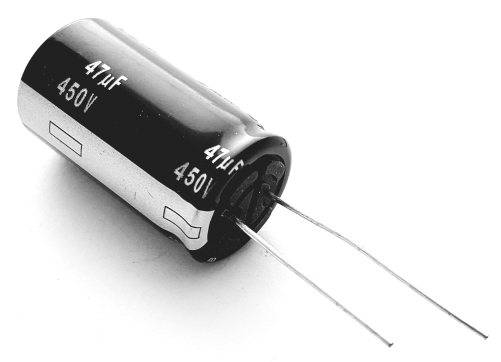Pretty much every device you own has one. They’re in every wall wart, every power supply. Capacitors are about as common as LED lights, and yet you never think about them.
A capacitor stores energy
A capacity takes energy fairly quickly and stores it. As energy flows into the capacitor, it becomes trapped by a dielectric material and stays in the capacitor until it needs to be discharged. When it is discharged, the energy flows out of it very quickly. The closest thing I can think of is something like a reservoir.

Imagine all that water flowing quickly into a reservoir where it just sits. Then if the dam opens up all the gates at once it just all comes flowing out massively quickly.
Capacitors are used in power supplies for the most part. Many electrical devices need a lot of power to start up, but the draw on the power supply would be too great if you pulled all that power straight from the outlet. Power supplies take current from the outlet and transform it into the right voltage and amperage for the device itself. The power supply will last longer if it can store the right voltage and amperage first and then draw it quickly as needed.
Wait, isn’t that a battery?
A battery and a capacitor are very similar. The biggest difference is that a battery stores energy chemically and a capacitor stores it electrostatically. In other words, when energy goes into a battery it creates a change in the chemicals in the battery. When that energy is drawn, it causes the chemicals to change back to how they were.
On the other hand, a capacitor stores energy as energy, in a magnetic field. This means the energy can be discharged much more quickly but it also drains more quickly if not used.
Batteries are good for long-term storage. Capacitors are good for quick releases of energy. Batteries can sit on the shelf without discharging, while capacitors will discharge if not fed energy.
What does a capacitor look like?

Because capacitors drain quickly, you almost always see them attached to circuit boards and so they tend to have wires coming out of them like these capacitors do. There was a time you could go to Radio Shack and get them out of a bin but how they’re sort of special purpose items since most people don’t build their own circuit boards.
What to look for in a capacitor
The one thing you need to concern yourself with in a capacitor is whether or not it has blown. In some cases a capacitor will store so much energy that it will swell and stop working. Capacitors will fail if exposed to too much current or too much heat.
![]()
A bad capacitor will be swollen on the top or sides. It won’t be a perfect cylinder. In a really badly blown capacitor you’ll see some sort of material around it. This is the stuff that should be on the inside and isn’t.
When a capacitor fails, it breaks the flow of current and the device it’s attached to stops working.
In some cases, if you’re really handy, you can replace a capacitor yourself. However, it’s more likely that the board it’s attached to was assembled by robots and even the most delicate human hands won’t be able to fix it. Unfortunately at that point you’re getting rid of a whole part because a 59 cent part blew.





